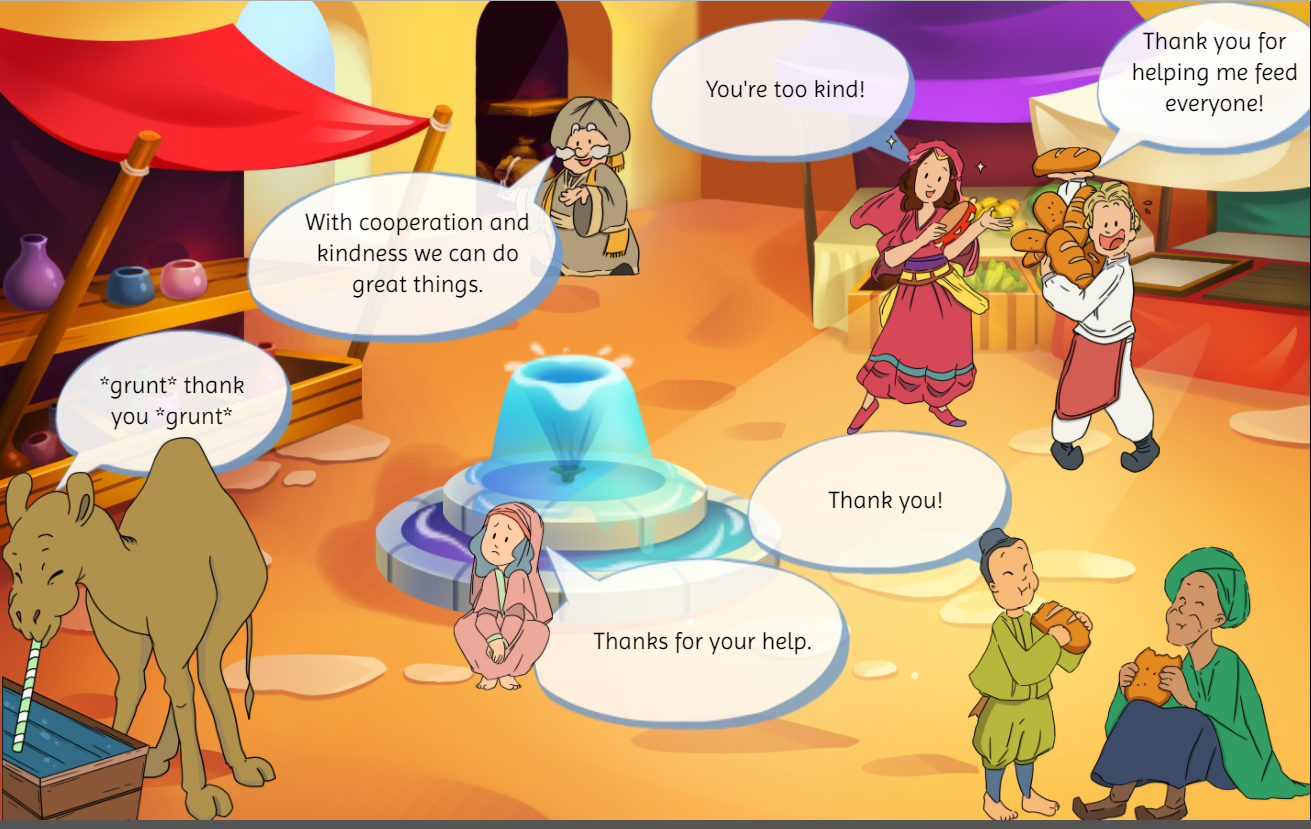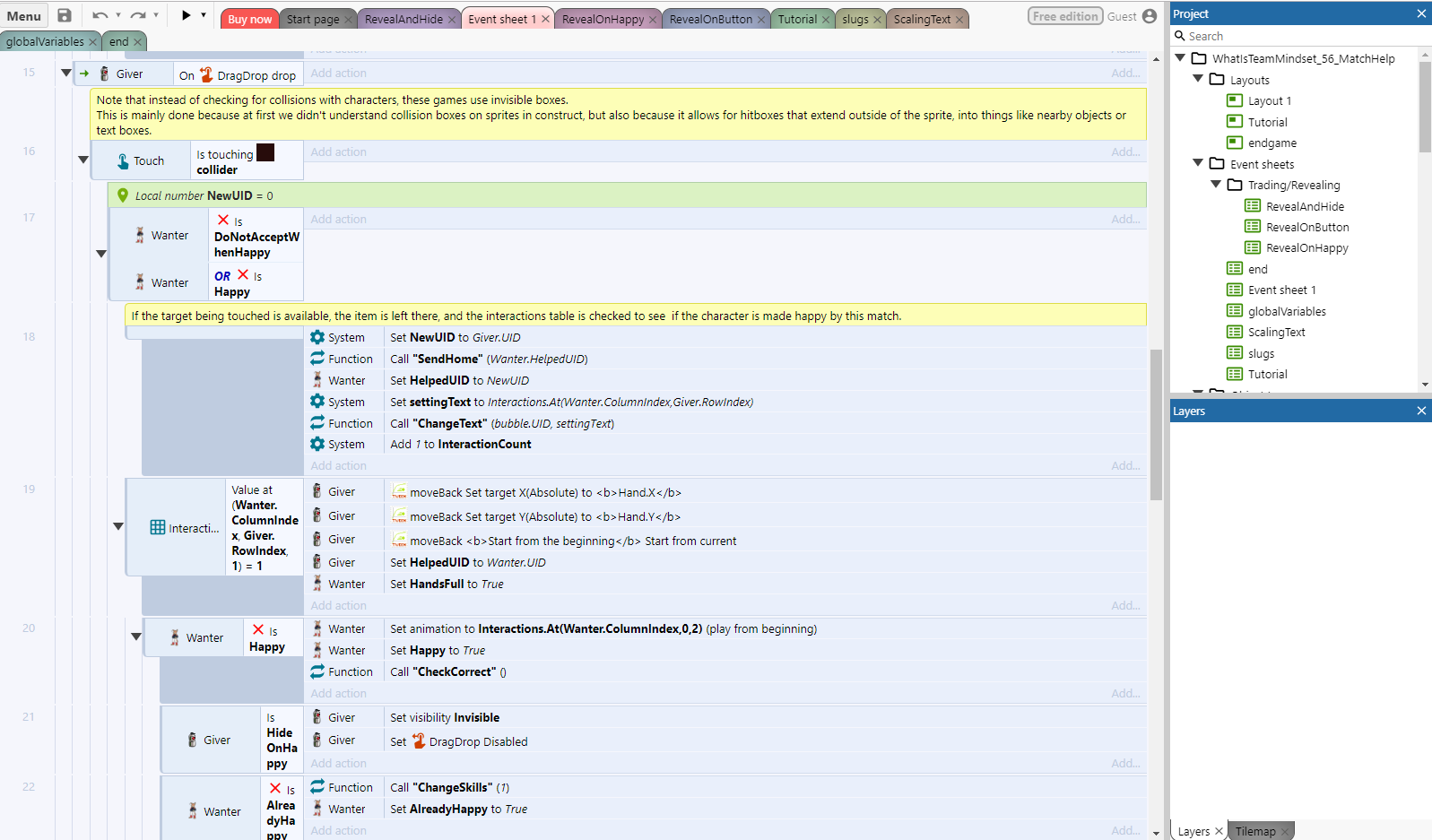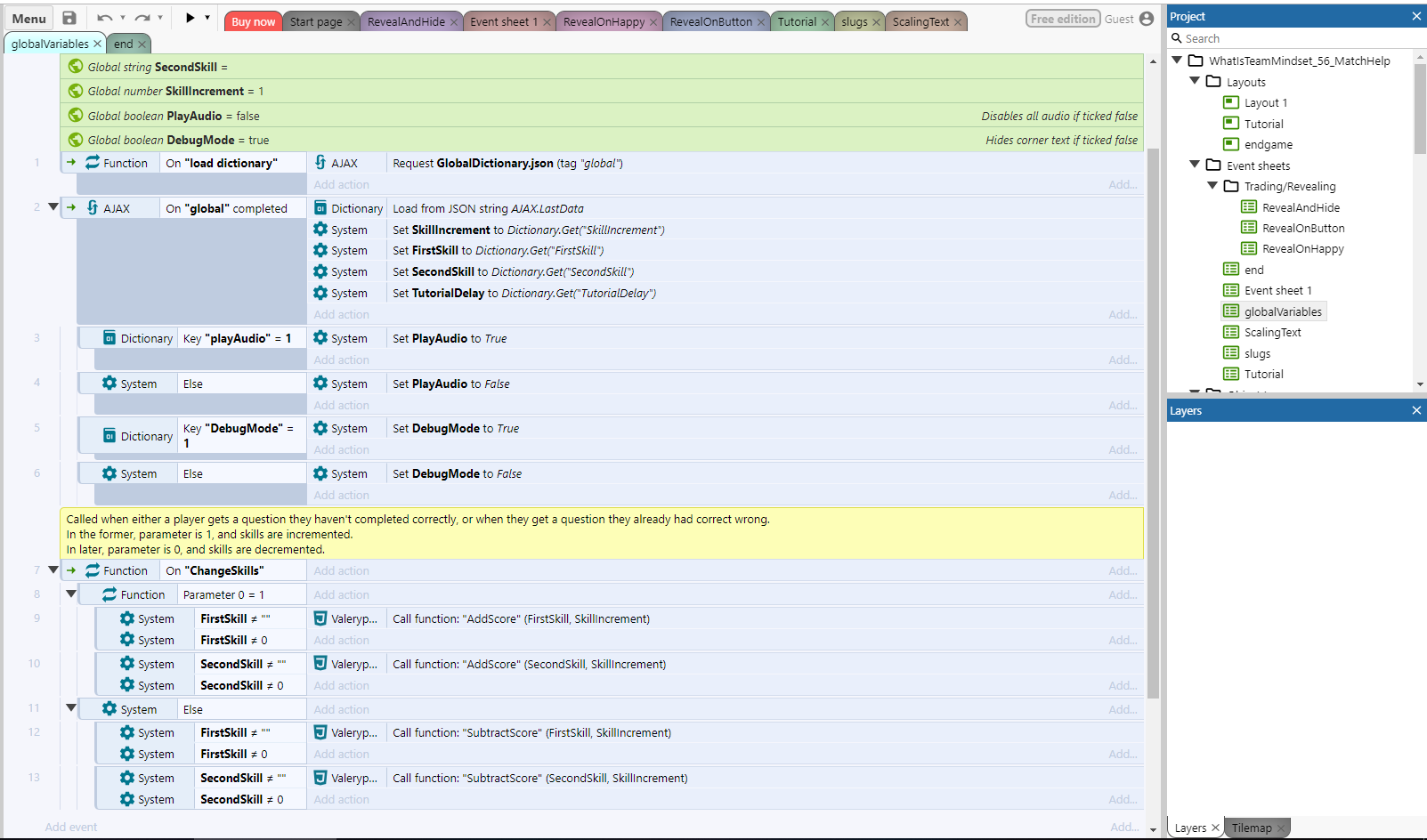In match and help games, players are presented with scene that shows characters who are struggling with problems, along with items that could help.
When a character is matched with an item, the character’s dialogue changes along with its animation and state.
To make things more engaing for older kids, match and help games use a wide variety of locations and allow for players to demonstrate their knowledge of the class content in more complex ways.
Younger kids, for example, learn a team mindset by each picking out a toy, whereas older kids play the game shown above, where they must help a crew on a spaceship fend of aliens and repair their ship.
The items that are matched are usually items, but can also be more abstract icons, like an emoji representing an emoji or a word that can be placed to finish a sentence. An example can be found in the self awareness games, where the player helps the characters understand how they're reacting to a current situation.
Another example involves matching a phrase to a thought that will allow the character to manage their current emotion, either by calming down a negative emotion or using positive energy to help another.
These games also have the technical capability for items to only appear when a nearby person is made happy, or for the item to appear after an object is clicked on.


